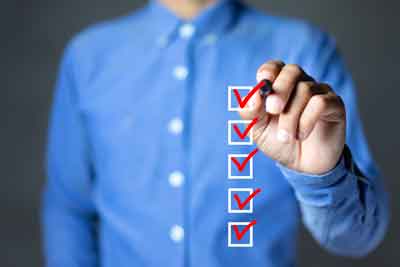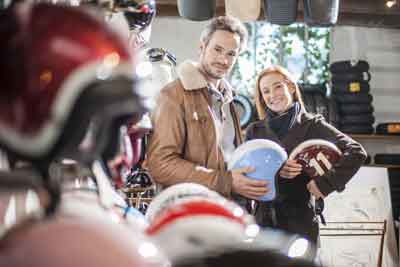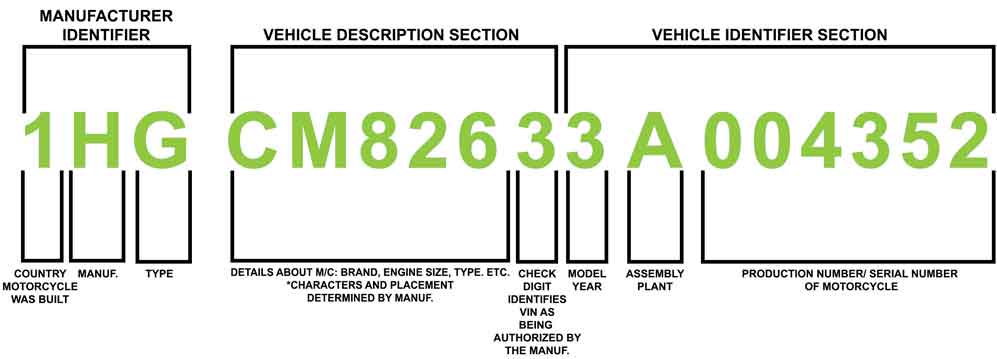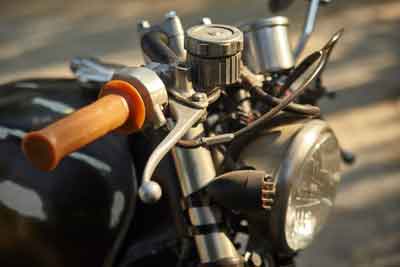6 Tips For Buying a Motorcycle from a Private Seller | 2024 Guide

You’ve found the perfect motorcycle. You’re already envisioning your first ride. But then reality hits: the private seller is located three states away—and so is your motorcycle. At first, making such an important purchase out of state might seem like a deal-breaker. But with the right approach, you can remove the hassle (and uncertainty) of buying your new ride from a private seller located elsewhere in the U.S.
Your Checklist For Buying From a Private Seller

Buying a used motorcycle from someone local brings a certain level of convenience. You can make the transaction in-person and inspect the motorcycle before riding it home. But when you’re looking for a particular used motorcycle, or the best overall deal, you might have to set your sights beyond your state line. Before you buy, complete this checklist to make sure you’ve dotted your i’s, crossed your t’s and are on your way to a successful purchase.
(Note: This checklist focuses on purchases from private sellers. If you’re purchasing a motorcycle from a dealership, they should be able to help you navigate the items below. If you’re traveling to another state so that you can purchase the motorcycle in person, then do the viewing live rather than over video call.)
1| Determine the Motorcycle’s Value
- Shop around. See what the motorcycle is selling for elsewhere.
- Search the NADA Guide. Ensure the asking price is reasonable for the motorcycle’s year, make, model and condition.
2| Contact the Seller
- Email the seller. Ask to see more photos of the motorcycle. Keep the dialogue friendly.
- Get the VIN.
Ask the seller for the VIN number before you move any further. Then, run a VIN check. (The National Insurance Crime Bureau has a free VIN service to help you determine if the motorcycle was stolen or reported as salvage. You can also do this for a small fee through the DMV.)
- Ask about the title. If the seller doesn’t have a title, the deal doesn’t necessarily have to be DOA. However, if you move forward knowing the seller has no title, do so with caution.
- Pick up the phone. If you’re still interested after your email exchange, pick up the phone. It’s much easier to sense a scam on a call, when you have the benefit of hearing the person’s voice. Ask about payment terms if you haven’t already.
3| Hold a Virtual Viewing
- Schedule a video call. Set aside a full hour so you have enough time to really assess the bike you’re considering buying.
- Ask the owner questions.
Video Calls for Virtual Viewing - How long have you owned the motorcycle?
- When was the last time the motorcycle was registered?
- Who was the previous owner?
- Has the motorcycle been in any accidents? If so, describe them.
- Do you have receipts from the motorcycle’s repairs and/or maintenance? If the seller is willing to share them via email, that’s a major plus.
- Do you have a buyer’s remorse policy? Most private sellers won’t have this, but it doesn’t hurt to ask.
- Inspect the motorcycle “live” on video. You can view our detailed checklist for buying a used motorcycle, but here is a quick guide for things you will want to ask the seller to show you:
- The VIN. Make sure the numbers aren’t altered. If they appear to be changed, not stamped by the factory, then it’s time to walk away.
- The title. Make sure the owner can show you the title. Then, make sure the VIN on the motorcycle matches the one on the title.
- The engine while running. Ask the owner not to start it before your call so that it’s cold when started.
- The motorcycle rolling. Ask the owner to turn off the motorcycle, put it in neutral and roll it.
- A close-up of the motorcycle itself. Don’t be afraid to take your time; if sellers are serious about making the deal a win-win, they’ll show you the details you need to make up your mind.
-
- The ground under the motorcycle. Are there any wet spots?
Inspect the Bars and Levers - Bar ends, levers and footpegs. Are any of them aftermarket? Are they damaged? If so, the motorcycle might have been in a crash.
- The tires. Are they flat? Do you see any pilling or feathering, which are common signs of a motorcycle being used at the track?
- Scratches or dents
- Fork and ignition locks. Make sure the key works and that they’re not broken.
- Wiring. Pay attention to any signs of a DIY fix or update. This isn’t necessarily a deal-breaker, but it’s better to know now—when you can ask the seller about it—than after the deal is done.
- Damage. Check for scratches, dents, rusty chains, leaks and any other sign of an issue.
-
4| Do Your Paperwork
- Review your state’s rules about out-of-state purchases. These vary and can impact the process of transferring the title and bringing a vehicle into the state.
- Sort out registration. When you buy a motorcycle from a dealer, they usually handle registration for you. But if you’re buying from a private seller, it becomes your job. Contact your local DMV and have the motorcycle’s VIN ready. If you’re riding your motorcycle home, you’ll need to also get temporary registration.
- Get insurance. In most states, you’ll need proof of motorcycle insurance before you can complete the title and registration process. If you already have a motorcycle insurance policy, get a quote on adding the additional bike. If not, contacting your auto insurance agent is a good place to start.
5| Figure Out Shipping
- Get a free quote ahead of time. If the buyer doesn’t include shipping in the sale price, then your goal should be to find the best quality, most affordable motorcycle shipping company. (Full disclosure: We’re one of few companies that specialize in motorcycle transport). Get a quote for shipping the motorcycle to your door before you finalize the deal. That way, you know the true costs of your purchase.
6| Purchase the Motorcycle

- Use escrow.com to protect both parties. As the buyer, you deposit the purchase price into a secure online account. When the escrow agent lets the seller know the payment is received, the motorcycle is shipped to you. When you receive the bike, you have a certain amount of time to confirm it was received in the agreed-upon condition. Once you do so, the funds are released to the seller. (Here’s more on how the escrow.com process works for motorcycles.)
- Make sure you receive the title when you pay. This is another area where escrow.com comes in handy. If the seller says he will mail you the title, walk away.
- Pay sales tax. If you purchase your motorcycle online, that doesn’t mean you’re exempt from tax. In general, you’ll pay sales tax in the state where you’ll be registering it. If you’re buying in a state with no sales tax (think: Delaware or Oregon), you’ll still have to pay sales tax if you register it in a different state, Your local DMV can help you through the process.
- Get riding. Once your paperwork is complete and the sale is final, it’s time to hit the open road.
Whether you’re purchasing a motorcycle out of state or want to take a destination ride (think: Alaska, Hawaii or anywhere else in our great nation), Motorcycle Shippers is here to help. Let us get your precious cargo to its final destination safely.


